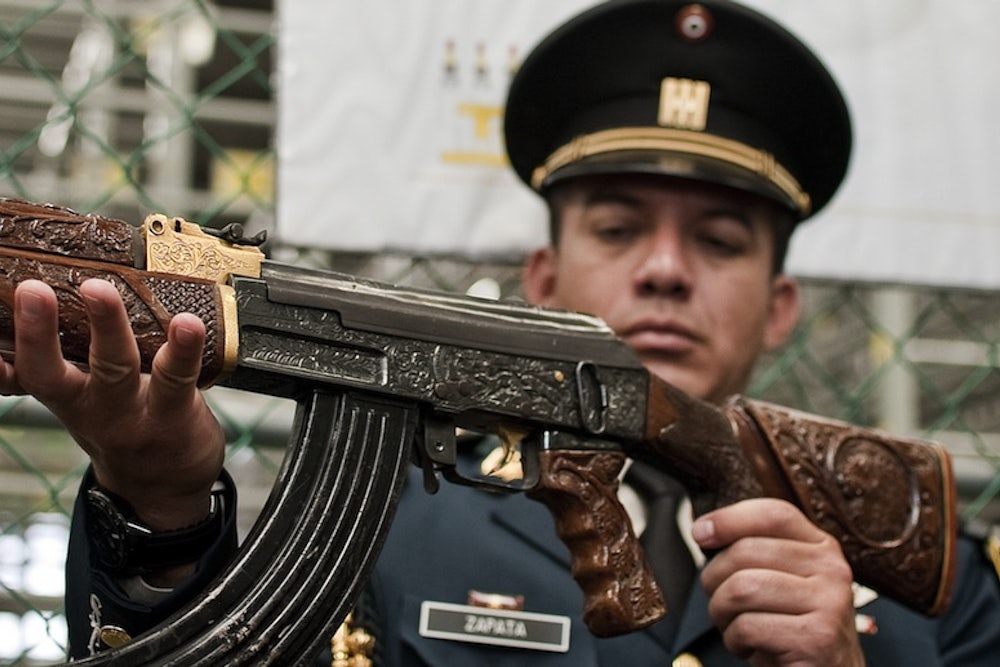Mikhail Kalashnikov, who died today at the age of 94, was thinking of the Soviet military when he designed the AK-47 assault rifle in 1947, but it quickly made its way to pretty much every corner of the criminal world—and more than half a century later, it’s proved one of the most popular weapons of the modern era. What can a modern inventor looking to dominate the international market learn from Kalashnikov? Political scientists from the London School of Economics looked at the reasons for the AK-47’s success in a 2012 paper published in the journal Global Policy.
It's hard to regulate.
SALW proliferation is facilitated on the supply side by the growing ease of international travel and communications, and the expansion and deregulation of global finance and trade, both legitimate and underground. The post-Cold War military retrenchment released unprecedented materiel and ordnance into the market, decreasing prices and enabling access for private and non-state actors…SALW production has expanded geographically around the world, from a few companies in a handful of great powers to ‘nearly 1,250 companies operating in some 92 countries…The most famous type of SALW, the ubiquitous Avtomat Kalashnikova – AK47 or Kalashnikov – is now widely available around the world at a very low price ($30 in Africa and $50 in the US and Europe)…
Globalization has made national regulation ‘increasingly irrelevant’ as even licit arms companies can circumvent controls by exporting through subsidiaries in countries with laxer laws. In the illicit market, brokers can operate from areas of the world beyond the rule of law…SALW is particularly hard to control given its low prices, recyclability of parts, concealability and ease of movement.
It's easy to carry—and to hide.
There are an estimated 640 million SALW [small arms and light weapons] globally…SALW are available even in the most impoverished areas. They are relatively portable and concealable and their parts are often recyclable and/or reusable.
SALW caused an ‘overwhelming majority’ of casualties in post-Second World War conflicts…From 1995 to 2005, up to three-quarters of serious human rights violations have involved the use of SALW.
It's suited to modern warfare.
On the demand side, arms traders benefitted from the 1990s ‘new wars’ and the global war on terror’, characterized by the collapse of state authority and growing nonstate actor involvement in hostilities. The low-intensity, unconventional nature of these conflicts has particularly favored the use of SALW.
Another lesson to learn from Kalashnikov: Trademark your product. Kalashnikov hardly profited from the AK-47, only making money when he lent his legendary name to the makers of pocketknives, handbags and other tchotchkes.
